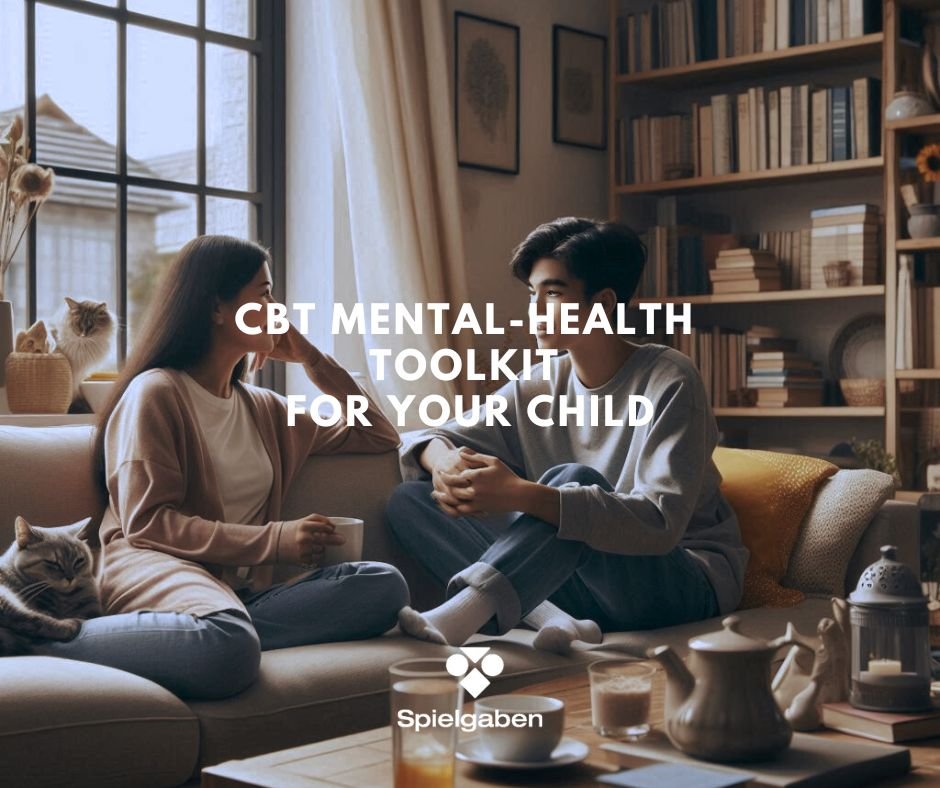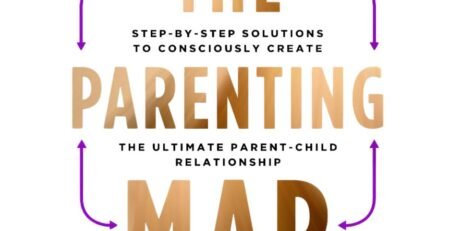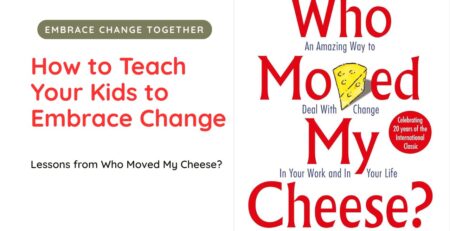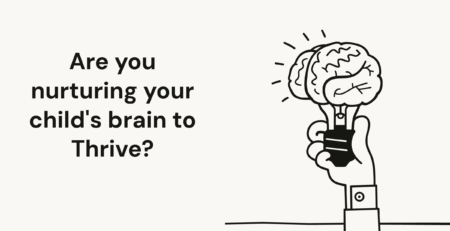Add these CBT techniques as your child’s mental-health toolkit
Have you ever felt trapped by your own negative thoughts and emotions, wishing there was a way to break free? Cognitive behavioral therapy, or CBT, may hold the key.
Cognitive behavioral therapy is a versatile tool to transform your thought patterns and improve your well-being. It’s a leading treatment for mental health issues such as anxiety and depression, but can also help with things like building self-esteem and self-acceptance, strengthening relationships, diffusing stress, controlling cravings and impulses, and more.
CBT helps children identify, challenge, and ultimately restructure their thinking so that they can live healthier, better adjusted lives. Taking a cue from CBT, parents, too, can help kids recognize cognitive distortions, and reduce their intensity.
In this article, you’ll see how CBT can help your child to understand the complex interplay between his thoughts, feelings and actions – and harness that knowledge to improve his mood and quality of life.
If your child is struggling with significant mental health challenges, it’s important to seek professional help. But for parents looking to enhance child’s emotional well-being and build resilience on his own, the techniques discussed in this article can be valuable additions to your child’s mental health toolkit.
Let’s get started.
The practice and promise of CBT
The power of CBT lies in its practical approach. Rather than simply exploring the past, CBT is focused on identifying present challenges and equipping your child with concrete tools to identify and change problematic thoughts and behavior patterns.
At its core, CBT is a way to identify and modify the hidden cycles of thoughts, feelings and reactions that influence our well-being. By methodically recording automatic thoughts and labeling the cognitive distortions within your child, you are able to consciously reframe them and you can help your child to default to healthier ways of answering life’s challenges.
CBT isn’t about putting on rose-colored glasses, but rather freeing oneself from the prison of reactive thoughts. It grants the autonomy to choose which thoughts have meaning and which can be discarded; to choose what actions align with your child’s goals and values. With practice, your child can learn to face the full spectrum of his emotions with greater balance and equanimity.
As your child learns to uproot counterproductive thought patterns and sow more adaptive ones in their place, he will find himself blossoming in unexpected ways – feeling lighter, more decisive, and more resilient.
Self-esteem and the inner critic
How often do you find yourself grappling with self-doubt, questioning your worth, or being your own worst critic? It’s all too easy to fall into negative self-talk and let your inner critics run the show. And, it is the same for children. How can you help your child address that nagging voice?
One way is through building self-esteem. Self-esteem, at its core, is about valuing and respecting yourself – believing in your worth. It’s a foundation upon which you can build the confidence to pursue your dreams.
One simple way to cultivate self-esteem for your child is to engage in activities that bring him joy, fulfillment, and a sense of accomplishment.
Whether it’s pursuing a creative passion or volunteering for a cause your child believes in, certain grounding experiences remind him of his unique interests and capabilities. By prioritizing what nourishes your child and challenges him to grow, he will connect with what matters to him as an individual, nurturing his self-esteem.
Now what about that inner critic? Here’s a specific exercise that can help your child develop a more constructive relationship with himself, by observing and letting your child’s inner critic may actually be trying to help, albeit in a maladaptive way.
To begin, sit quietly and listen to inner thoughts for five minutes. What self-critical thoughts come to mind? Just notice what comes, without judging or trying to stop them. These are what we call automatic inner thoughts. Ask your child to write them down.
Next, ask him to review the list of self-critical thoughts and circle three of them that he finds most bothersome. We call these “spicy” thoughts.
Now look at these three spicy thoughts objectively and help your child to see if he can reframe them as more constructive, helpful statements. For example: “I’m terrible with time management” could be reframed as “I’d like help with time management.” “I’m not good at socializing and making friends” could be reframed as “I care about improving my friendships and will think of something nice to do for a friend.” “I’m a lazy” could be reframed as “I’m just tired, but I care about improving myself.”
By practicing this reframing technique, your child will start to recognize that his inner critic, while harsh, is often trying to help you improve.
The key is to acknowledge its presence, but reframe its messages into more constructive, actionable feedback.
By developing more positive self-talk and a productive relationship with inner critic, your child can support his personal growth and self-esteem at the same time at much faster pace.
Coping with cravings
Since we are discussing CBT, it is worthwhile mentioning about Craving because cravings are a natural part of the human experience and directly related to behaviour and psychology.
Whether directed at food, stimulation, or mind-altering substances like alcohol, cravings can lead to overindulgence and destructive habits if left unchecked.
Did you know that the prevalence of obesity among U.S. children and adolescents was 19.7%? This means that approximately 14.7 million U.S. youths (1 out of 5 youths) aged 2–19 years have obesity.
Cravings are rooted in the interplay of neurochemicals within the brain’s reward system. Dopamine serves to reinforce the desire to repeat gratifying experiences. Oxytocin, the so-called “love hormone,” is also implicated in the reward centers of the brain and is increasingly being studied in relation to addictive behaviors. The greater the surge of these chemicals in response to an activity, the more powerful the urge to seek it out again and again, potentially ensnaring us in a cycle of addiction.
Food cravings, for example, are often tied to our emotional state. Stress can dramatically alter eating patterns, driving some to seek solace in overeating while causing others to lose their appetite completely.
The “Rate Your Hunger” exercise is a simple yet effective tool your child can use before a meal, to tune into how hungry your child really is.
First, take a moment and ask your child to assess his hunger level on a scale from 0 to 10, with 0 being not hungry at all and 10 being ravenous.
Once your child rated his initial hunger, let him proceed to eat his meal, but pause halfway through and ask him to reassess and record his hunger level. After finishing his meal, ask him to take a final reading of his hunger scale.
Sound simple? It is. But by repeating this consistently, your child will develop a deeper awareness of his body’s genuine hunger cues, learning to distinguish between actual physical hunger and emotional or environmental triggers that he associates with eating.
Over time, this heightened sensitivity will help your child to make more intuitive choices about when to eat and how much, ultimately fostering a healthier, more balanced relationship with food.
Another type of craving that might affect your child is a craving for stimulation or an adrenaline rush, which can lead to risky or self-destructive behaviours. Here, your child can use the “Visualize a Peaceful Inner Place” exercise which professional child therapists often use to help calm a child’s mind and body.
First, find a quiet, comfortable space where your child can sit or lie down. Ask him to close his eyes and picture himself in a serene setting, such as a tranquil beach or forest. Engage all of his senses as he immerses himself in this imaginary place; feel the warmth of the sun on his skin, hear the sounds around, smell the clean air. Relax into this scene, letting go of any thoughts or worries that arise.
Help him to notice how his body and mind begin to settle and his craving for stimulation gradually dissipates. When he feels ready, gently open his eyes and take a moment to reflect on the experience, observing any shifts in his thoughts or emotions.
It may be awkward for the first time but after a few tries, your child will soon get familiar with it and can do it himself when and wherever he wants and help himself to calm his mind and body.
With regular practice, the “Visualize a Peaceful Inner Place” exercise can become a reliable tool for managing your child’s stimulation cravings, helping him to cultivate a greater sense of peace and balance. Yet another tool from cognitive behavioral therapy that can help your child in his daily life.
Conclusion
CBT techniques offer practical, actionable steps for parents to help their children manage anxiety, build self-esteem, and cope with cravings. By integrating these practices into daily life, parents can significantly enhance their child’s emotional well-being and resilience. Remember, the journey to mental health is ongoing, and every small step counts. Start today, and help your child build a robust mental health toolkit for a brighter, more balanced future.













LEAVE A COMMENT